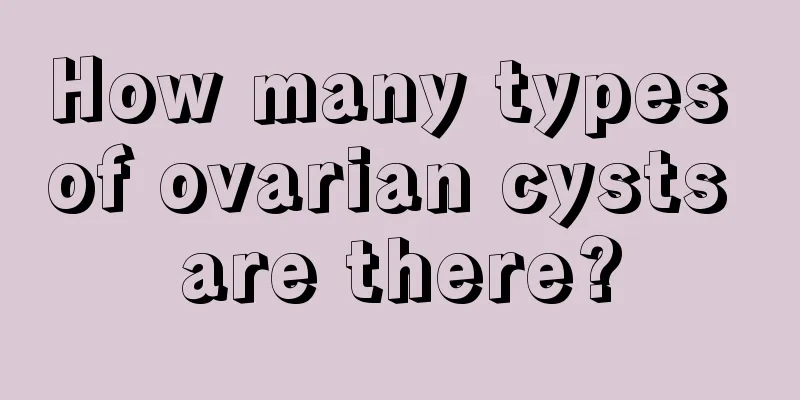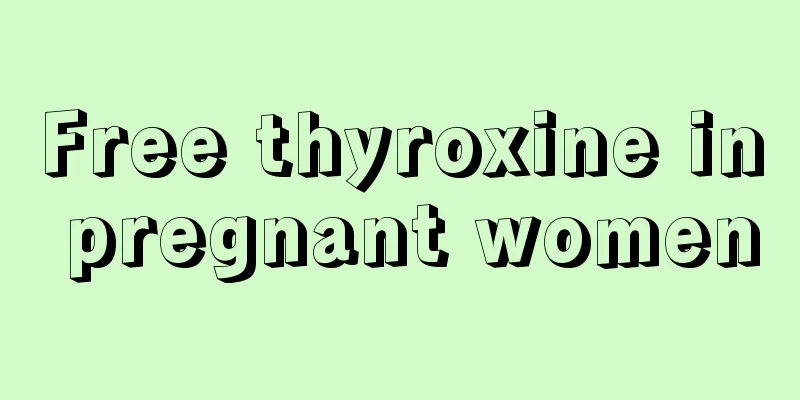Precursor of fertilized egg implantation

|
When the fertilized egg implants, people will not feel any symptoms intuitively, and there will not even be any precursor reactions, unless some patients have abnormal fertilized egg implantation. At this time, they may feel severe abdominal pain. In this case, they should go to the hospital for a B-ultrasound examination as soon as they find it. This kind of examination can help them understand their condition intuitively. Implantation begins around the 6th to 8th day after fertilization and is complete around the 11th to 12th day. Generally, implantation occurs slightly more often on the posterior wall of the uterine body than on the anterior wall, and more often in the midline than on the lateral wall. 1. Attachment: With partial perforation or complete disappearance of the zona pellucida, the trophoblast near one end of the inner cell mass rapidly divides and attaches to the endometrial epithelium. The tiny villi on the two opposing tissue surfaces span the gap, interdigitating extensively with each other in a finger-like manner, and then the villi intertwine with each other. Implantation: After the blastocyst (also known as the embryo) attaches to the endometrium, the cell membrane of the endometrial epithelial cells gradually disappears and turns into a multinucleated cell body. The trophoblast also differentiates into two layers. The inner layer retains the cell membrane and is called the cytotrophoblast; the outer layer cell membrane disappears and is called the syncytiotrophoblast. The syncytiotrophoblast has a strong corrosive power, eroding the uterine membrane and forming a small gap, allowing the blastocyst to slowly sink under the dense layer of the endometrium. About 10 days after fertilization, the entire blastocyst is located in the endometrium. On the 11th day, there is a closure plug composed of small blood clots and cell fragments in the endometrium. On the 12th day, the blastocyst is almost completely covered by proliferating epithelium and forms a small bulge, and implantation is complete. One end of the fertilized egg is tightly attached to the endometrium, and it immediately secretes an enzyme that breaks down protein, dissolving the endometrium and forming a gap with a diameter of about 1 mm. The blastocyst is embedded in the endometrium through the gap, the epithelial gap is quickly repaired, and the blastocyst's settlement is completed. This process is medically known as implantation or implantation of the fertilized egg. 1. The zona pellucida must fall off and dissolve so that the blastocyst can be released and attached to the endometrium. The substances that can cause the zona pellucida to fall off and dissolve include: ① enzymes secreted by the blastocyst before implantation, such as △-3β-HSD (hydroxysteroid dehydrogenase) and 17β-HSD; ② uterine globulin antigens similar to rabbit embryo kinin in the endometrium and uterine fluid. 2. Before ovulation, estrogen causes the endometrial epithelium to proliferate, while after ovulation, low levels of estrogen and progesterone can cause the glandular epithelium to proliferate. The luteal phase progesterone plus the small amount of estrogen secreted by the corpus luteum can cause the secretion of glandular epithelium and the proliferation of interstitial cells, resulting in decidualization. Progesterone can make the endometrium of both uterine horns produce embryokinins, which promote the growth and development of the blastocyst and the production of villi. It also makes the villi contain bicarbonate ions (HCO3). It combines with carbonic anhydrase in the endometrium to make the local area highly alkaline, causing local disintegration of endometrial tissue and ultimately allowing the fertilized egg to implant. Human chorionic gonadotropin (HCG) is secreted by the blastocyst before implantation. On the 10th day after fertilization, the HCG concentration in the implantation area can be as high as 10,000 IU/L. HCG can transform the corpus luteum of the ovary into the corpus luteum of pregnancy. The hormones secreted by the corpus luteum of pregnancy cause the endometrium to transform into decidua, creating conditions for the implantation and development of the fertilized egg. Eugenics is a brand-new concept of fertility: preparation for pregnancy begins 3 months or even 6 months before the moment the sperm and egg combine. |
<<: Benefits of abdominal care
>>: What is the luteal phase of menstruation?
Recommend
After testing positive for COVID-19, will you test positive again? Will repeated infection make it more serious?
Many people are concerned about reinfection with ...
What are some recipes for women to replenish blood and qi?
There are thousands of ways for women to become b...
Can I eat noodles during menstruation?
Female friends are prone to indigestion during me...
How to improve follicle quality
There are certain problems with the quality of fo...
Misconceptions about anemia diet
Everyone has heard of anemia, but do you really u...
Implantation reaction one week after intercourse
During the period of preparing for pregnancy, cou...
Surprise! Forehead wrinkles are related to cardiovascular disease?
Have you ever looked in the mirror and suddenly f...
How to use baking soda to prepare for pregnancy
Now many families want to have another child. The...
What are the benefits of drinking brown sugar water for girls during menstruation?
Girls are used to drinking brown sugar water duri...
What should I do if a girl has small breasts?
Nowadays, many women have small breasts due to va...
Pinterest analysis: The advertising giant that focuses on the future
A few weeks ago, Pinterest, a social media servic...
What medicine can cure breast hyperplasia quickly?
Breast hyperplasia is a problem that many women e...
What are the cooking techniques for Mapo Tofu? Characteristics of Mapo Tofu
The raw materials of Mapo Tofu are all fresh, ten...
What to do if there are spots on the corners of the eyes
Spots at the corners of the eyes should be famili...









